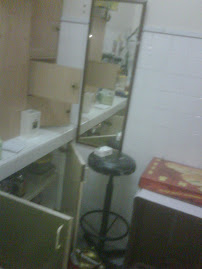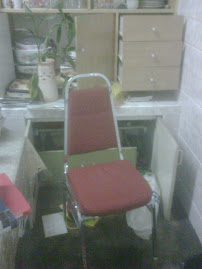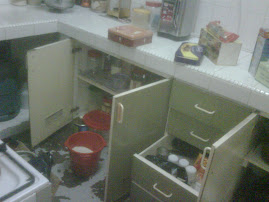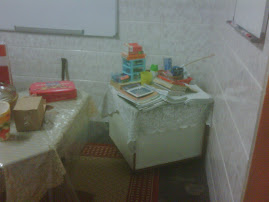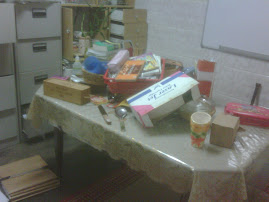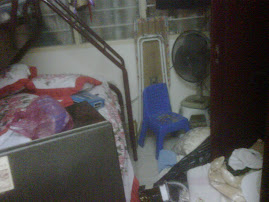
MALAYSIA has all it takes to make that quantum leap into becoming a high-income nation. The New Economic Model (NEM) will be a monumental task for Malaysia in steering its workforce in the direction most desired in achieving such an economic model.
But is the government prepared to make a departure from its conventional approach of having to rely quite heavily on foreign experts to consult for work to be done.
Do we not have what it takes to provide such expertise and do we not have what it takes to carry from where many had left.
The NEM to be proposed by the Prime Minister Datuk Seri Najib Tun Razak towards the end of this month will focus on raising the productivity level of workers and helping them earn higher income.
This task is expected to be handled by a new economic council comprising experts both from within Malaysia as well as from aboard.
The model would undoubtedly outline how Malaysia is going to improve its economic situation from the high middle income level where it is positioned currently to a high income level.
The quantum leap desired by way of increase in workers’ productivity should not only be more hours worked but it also has to harness innovation and creativity.
By achieving this, the workforce will be paid higher salaries. With the NEM in place, all efforts be they those involving the private sector, government-linked companies (GLCs) or even government companies can in a parallel move, raise workers’ skills through such innovation and creativity to ultimately bring progress to the nation.
The NEM therefore has to be carved, chipped, smoothened and scupltured in such a way so that it can be beneficial to workers within the country being able to attain a higher level of competitiveness.
The government's goal is to enable the country to make a quantum leap and efforts must be taken to translate the noble desire of the government to translate such efforts into a reality.
The current rate of unemployment in the country is about 3.1 percent in 2009 and could increase to four per cent this year due to impact of the global economic recession, a situation which has to be addressed as the NEM is being formulated so that the jobless are employed and the rate of unemployment kept in check.
The NEM would indeed have to lay the groundwork now to develop the required pool of talent ready to take on such a big challenge.
SKALI’s contribution as a major player in the MultiMedia Super Corridor (MSC) for one, thus far has seen the company creating job opportunities and technopreneurs via the execution of the managed portal services (MPS) project.
Timely too is the 1Malaysia concept launched by the Prime Minister which is expected to draw on the strengths of a united population with leaders seeing and visualising this together.
A campaign of this magnitude requires strength in unity, selfless hardwork and the magnanimity of helping others to come onboard and be engaged in the process of change and transformation.
But in order for the policy to gain ground, there will be need for a wider participation and engagement by captains of industry and political leaders alike to be in sync with the Prime Minister in wanting to move this forward.
But not forgoing the fact that these are transformations being attempted during trying times of a global economic recession and countries such as Japan and The Netherlands in fine tuning their policy moves and practices should lend us a hand in taking the cue to better protect ourselves from volatility.
A common group is therefore sought where they can work together in overcoming obstacles and facing up to challenges which they might encounter in its implementation.
Before one knows it, the decade will be up and we are staring 2020 right in the eye and expect the middle spectrum of the visionary management spelt out by its conceptualiser to materialise and unfold Malaysia as a newly developed nation carrying a label that has to read “yes we can.”
The catch phrase could have worked wonders for Barrack Obama in his socio-political economic reform of the United States but it had better not be a phrase which we find difficult to live up to if old mindsets are not changed.
There is no room and there will be no patience in tolerating those out to make a quick buck for themselves by taking advantage of the privileges that are expected to be handed out as the NEM takes shape.
There will also be no slowing down in dealing with petty and trivial issues that could crop up along the way as the mode of engagement would be look at the bigger picture and be involved in the macro-economics of such governance.
Encouraging and promoting local business talent from whom a number of them had even broken barriers and taken that Malaysian brand name across the globe.
When such business icons are unearthed, Malaysia will emerge in a new dimension of being an an active seller as opposed to being a tradional buyer in the past. Names in the league of Air Asia, Maxis, Axiata, Sime Darby, Astro, YTL to name a few have forced decision makers to sit up and take notice that going Malaysian is by all means being Malaysian and warrants recognition from the government especially in having to be assigned such tasks.
To develop such icons, the government needs to provide them a platform so that they are able innovate their business ventures and take them to the next level by providing incentives and the marketing needed to accelerate their growth to achieve the desired results.
The government too needs to break away from its conventional modus operandi of mostly engaging with foreign consultants to undertake jobs which could otherwise be handled by homegrown Malaysian expertise and talent.
If such opportunities are not given to locals, they will never be tried and tested to emerge as lead players in critical areas of development projects.
The underlying message would be of course to tap on local talent and given them an active role to play in the NEM and by 2020, Malaysian professionals in their late 20s would be in their fourties with the right maturity and experience to become active players and take over agencies to administer and manage them more effectively with new management modes and techniques of changing times.
Skali has managed to do this over the years and have fully harnessed the talent inherent in fresh local graduates who were made to be involved in the management of portal services given their disciplines in the fields of information and creative technology.
However, the success of the NEM given the current scenario will only be able to germinate if it is led professionally and enriched with the concerted efforts of those entrusted to play a vital role in its implementation.

.jpg)
.jpg)

